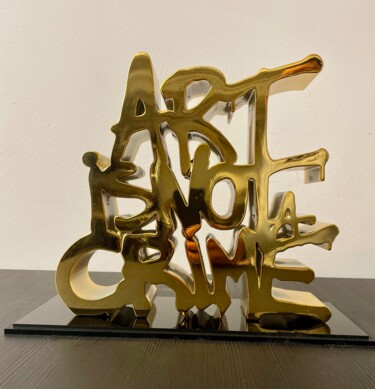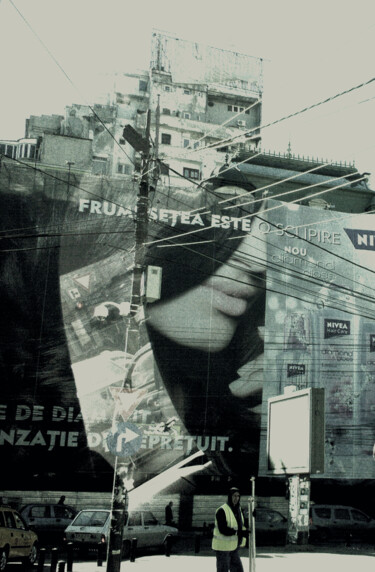16,365 Original artworks, Limited Editions & Prints:
Whether street art, urban art or graffiti, these new artistic trends have been established for several decades now in all major cities: from New York to Paris or from London to Tokyo via Rio. of Janeiro. First of all, the use of the word "Street art" is relatively recent. It dates from the 2000s. It was used in 2006 during the first art auctions representing works from this artistic movement. In 2008 the "street art" exhibition at the Tate Modern in London imposed this term to describe this new singular artistic movement characterized by a great diversity of style (graffiti, collages, stencils, installations, frescoes, mosaics, stickers...)
You could say it's a global art movement that started in the 1960s and is still alive today. The diversity of media used, styles, techniques and the freedom to create in the public space. It's a new movement that has entered the history of art.
Who created street art?
Traces of art have been found on the walls since time immemorial. Whether it is parietal art in the caves of Lascaux, or names found on the walls of Pompeii, the art of drawing and graffiti in the public space is found at all times. What is called street art today is therefore not totally new.
In France in the 1930s, the artist Brassaï, interested in graffiti, decided to photograph them to memorize them in photos. In the 1950s, Jacques Villeglé (1926-) and Raymond Hains recovered posters from the street in order to recreate a work of art with these lacerated pieces of poster. They thus laid the first foundations of what would later become street art. At the same time Gérard Zlotykamien (1940-), in 1963, he began to paint black and red silhouettes in the street that he would call “ephemera”. He will continue to paint his silhouettes for several years.
This theme of silhouettes and the use of spray paint are also important in the work of Ernest Pignon-Ernest (1942-). His stencil-cut silhouettes and drawn on the walls are his signature. He will invade certain places and walls with his creations like today's graffiti artists.
At the end of the 1960s, in Philadelphia (United States), the first of the "graphers" was the artist Cornbread, who wrote his signature everywhere. This is the birth of the first tags: Capital letters made with an aerosol spray. Many young people follow their example and will tag their name on the walls.
In 1969 Julio 204, in New York is one of the first to tag in the city, he is also the first to add his street number to his signature. Phenomenon that will become the marker of the New York movement. Taki 183 is truly the first tagger to become known in the city, covering walls and subway trains with his signatures.
Faced with the increase in the number of graffiti artists, artists are beginning to seek to differentiate themselves. Stay High 149 is the first to add graphic elements to its signature by doubling its tag and adding the halo visible in the Le Saint series. Following this many graffiti artists will follow his example and the style will become more and more inventive. Phase 2 is the outstanding artist who will modify the tag by creating ever more original letter shapes and ending its composition with an arrow.
The late 1970s prolific artist Seen produced works in bright, contrasting colors while Blade worked on perspective and geometry in his work. He is one of the first artists to be spotted by a gallery and to have his first exhibition.
The street art phenomenon is spreading all over the world
The style is evolving more and more, sometimes moving away from the original graffiti. The real hunt led by the authorities against the artists who tag the doors and subway cars intensifies, the artists are forced to redouble their ingenuity to work by being more and more rapid in their work and in creativity to be able to stand out from other artists. This will also lead to a change of place for their work and the increase of walls as a support for their achievements. The evolution of their work tool the aerosol can evolves. Many colors appear and the spray tips allow artists a variety of line thickness.
Artists Futura, Dondi White, Rammellzee or A-One were the leading artists of the late 1979s and early 1980s in the USA. They are also the first to give a more or less political message to their work. Since 1979 art venues and alternative galleries have been interested in and exhibited street art artists. The success became international and from the 1980s the artists Blade, Futura or Seen exhibited in numerous exhibitions in Europe. European museums such as the Boijmans Van Beuningen museum in Rotterdam will acquire street art works. With the exhibitions and the discovery of street art through travel, from 1983 and 1984, the phenomenon spread in Europe (France, Italy, Germany...)
In Paris, the first known graffiti artist is Bando who imports graffiti in France and joins the artists Blek le Rat and Jérôme Mesnager who make stencils in artists using urban supports.
The stammering beginnings of Parisian graffiti are concentrated on the banks of the Seine between the Pont Neuf and the Pont de la Concorde. Exchanges between European artists are intensifying. The English artist Mode 2 will thus work in Paris with Bando who will then collaborate with the Dutchman Sho. The exchanges are also intensifying with North American artists like JonOne who met Bando in New York, he is going to show him what is being done in Paris. JonOne then comes to Paris, he then joins the Bad Boy Crew (BBC) and ends up staying permanently in the French capital. JonOne will differentiate himself from other artists by focusing on movement rather than lettering. In the early 1990s, the BBC exhibited throughout Europe.
What is the message of street art?
If until now street art was essentially a tagging technique, from the 1990s urban art will experience a small revolution. Some artists will replace the signature with representations of faces, portraits...- like Shepard Fairey alias Obey. Still a student in 1989, he created an icon “André the Giant Has a Posse” and made a sticker out of it that he distributed to his friends asking them to stick it everywhere. Its objective is to make us aware that the images we see all have a meaning and that it is important to understand it.
The new generation will no longer use only the aerosol can to invade the urban space, but will use stickers, collage, mosaic, stencil...
The French Space Invider will invade public space by sticking mosaic tesserae on the walls to create visuals inspired by the 1978 arcade game Space Invaders. Invader has installed over 3000 parts in over 60 cities around the world.
In reaction to the visual pollution created by commercial communication in the public space, the artist Zevs will divert the logos of major brands by liquefying them on the facades of department stores after dark. He will also create shadows of street furniture objects by painting the shadows of these objects on the sidewalks.
Over the years, the artist Banksy will use his art to denounce the failings of society with humour, poetry and shocking visuals, in particular using the stencil technique. His simple and refined scenes astonish and mark the minds. He quickly became one of the most famous artists. Other French artists will use this technique like Miss.Tic, Blek le Rat, Jef Aérosol or C215.
Street art is constantly evolving. From the simple graffiti of his beginnings to the graffiti of Seen or JonOne, the techniques are diversifying. Graffiti artists continue to use spray cans to create their works. But they also use new techniques and supports such as mosaic, stencil, sticker, installations, sculpture or video projection.
Some famous street art artists
Banksy
Artist who managed to keep his identity a secret from the media. His works made mainly in stencil initially in the streets of London before invading the streets of the whole world.
His satirical and subversive work is carried out with the aim of highlighting a different way of thinking than the ambient one. Especially the mass media. His work focuses on strong political and social demands.
The 2010 documentary "Exit Through the Gift Shop" was nominated for the Best Documentary Oscar.
Shepard Fairey
Born in 1970, he is a contemporary artist known for his graphic serigraphs. Known first for his stickers, his work became famous thanks to his poster of Barrack Obama during the US presidential election in 2008.
His work is in the collections of many museums such as the Museum of Modern Art in New York and the Victoria and Albert Museum in London.
Jeff Aerosol
Artist born in 1957. He is one of the pioneers of street art in France in the early 1980s. Stencil artist, he creates portraits of personalities such as Elvis Presley, Lennon, Basquiat... but also anonymous people such as children , passers-by or beggars.
Street art artist quotes
Banksy
"Graffiti is one of the few avenues available to you when you have next to nothing. And while you can't cure poverty in this world with a picture, at least you can make someone smile while they piss".
"The greatest crimes are not committed by those who break the rules but by people who obey orders. They are the ones who drop bombs and massacre villages."
Gerard Zlotykamien
"Creation is a disease, an anomaly from which I have no intention of curing!"
What are the biggest street art festivals?
Many street art and urban art festivals take place all over the world:
- In France, the Grenoble Street Art Fest, the Underground effect in Paris la Défense, the Zoo Art Show in Lyon.
- In Great Britain, the Bristol's Upfest
- In Norway, NuArt
- In Canada the Montreal's Mural
- In Spain, the Asalto, Zaragoza, Bloop Festival, Ibiza, Arco Madrid, Miau Fanzara
- In the USA, Wynwood Miami, The Jersey City Mural Arts Program, Detroit - Murals In The Market, Hawaii Kaka'ako - Pow! Wow!, Sacramento - Wide Open Walls, Atlanta - Living Walls
- In Belgium, Ostend - The Crystal Ship
- In Switzerland, Art Basel
- In Poland, Lodz - Urban Forms
- In China, Hong Kong – Hkwalls
What are the films to see on street art?
- Get to the Wall: A Banksy Documentary
- Chats perchés: A documentary on M Chat
- Out directed by French street artist JR.
- Downtown 81 – Jean-Michel Basquiat: film returns to the beginning of Basquiat's career.
- Stations of the Elevated: a documentary on New York graffiti.
- Wild Style, a film from the 1980s: documentary on American urban culture and graffiti.
- Writers 1983-2003, 20 years of graffiti in Paris
Discover original contemporary Street Art Artworks on ArtMajeur
Contemporary Street Art is a captivating form of artistic expression that has taken the world by storm. Unlike traditional artworks, Street Art is often created using unconventional supports and materials such as walls, bridges, and even abandoned buildings. These urban canvases are brought to life using a variety of tools including spray paint, markers, and stencils. What makes Street Art unique is its ability to challenge the status quo, provoke thought and emotion, and provide a voice to the marginalized and oppressed. This art form is often associated with rebelliousness, activism, and an unapologetic attitude. Whether it takes the form of a political statement or a beautiful mural, Street Art has the power to transform an ordinary space into a work of art that resonates with people from all walks of life.
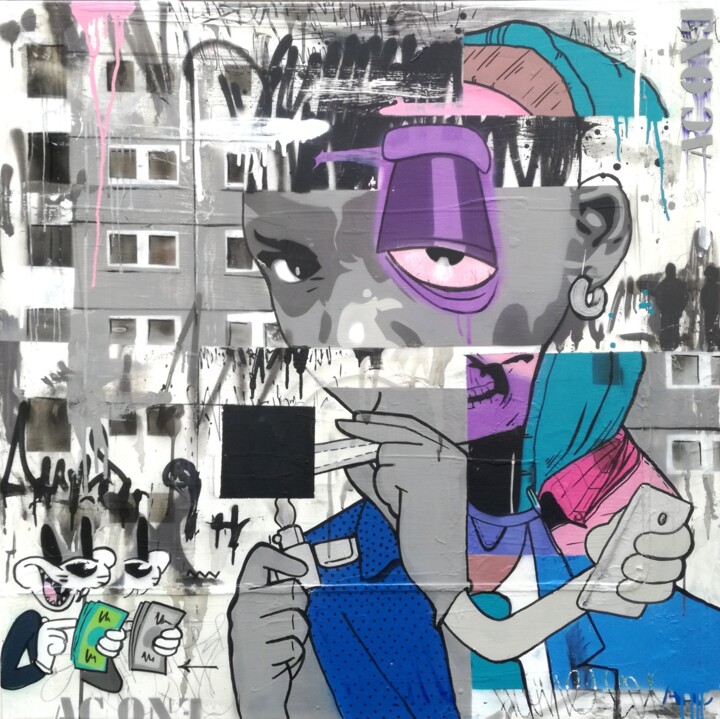
©2019 Ac One
Origins and History
The emergence of graffiti in the 1960s and 1970s is considered a pivotal moment in the history of original contemporary Street Art. This period was marked by the rise of hip-hop culture, which provided a platform for young people to express themselves through art.
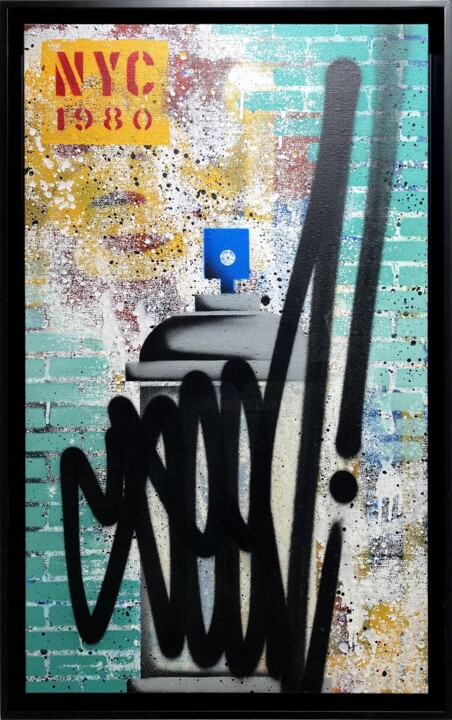
©2022 Richard Mirando (Seen) Artist represented by Tilsitt Gallery
Evolutions of theses works in the contemporary art market
The evolution of original contemporary Street Art has been remarkable in recent years. From its origins in the underground graffiti scene, Street Art has become a respected form of contemporary art that has taken the world by storm. With its vibrant colours, bold designs and powerful messages, Street Art has captured the imagination of the public and the art world alike. The use of stencils, wheat paste, stickers and murals has allowed Street Art to be accessible to everyone, making it an inclusive art form. The importance of Street Art in the contemporary art market cannot be overstated. It has become a valuable commodity and has been embraced by galleries and collectors worldwide. The demand for Street Art has risen, leading to an increase in prices and recognition for its artists. The relevance of Street Art in society has also been highlighted, with its ability to communicate social and political issues in a powerful and immediate way. Street Art has become a force to be reckoned with in the art world, and its evolution shows no signs of slowing down.

©2020 Rinalds Vanadzins
Related Famous Artists
Contemporary Street Art is a genre of art that has taken the art world by storm. Here are some well-known artists who have made a name for themselves in the world of Street Art.
Banksy is a British artist who is known for his political and social commentary in his work. His pieces often include stenciled images and satirical messages that challenge the status quo.
Shepard Fairey is an American artist who is best known for his work on the Obama "Hope" poster. He is known for his bold and graphic style, which often incorporates political and social issues.
JR is a French artist who is known for his large-scale, black and white photographs that he wheat pastes onto buildings around the world. His work often focuses on issues of identity, community, and social justice.
Faith47 is a South African artist who is known for her murals that often incorporate elements of nature and spirituality. Her work is often introspective and poetic, exploring themes of identity, memory, and the human condition.
Os Gemeos are Brazilian twin brothers who are known for their colorful and playful murals that often incorporate elements of Brazilian culture and folklore. Their work is often characterized by a sense of whimsy and childlike wonder.
These artists have made significant contributions to the world of Street Art, challenging the status quo and bringing attention to important social and political issues. Their work continues to inspire and engage audiences around the world.
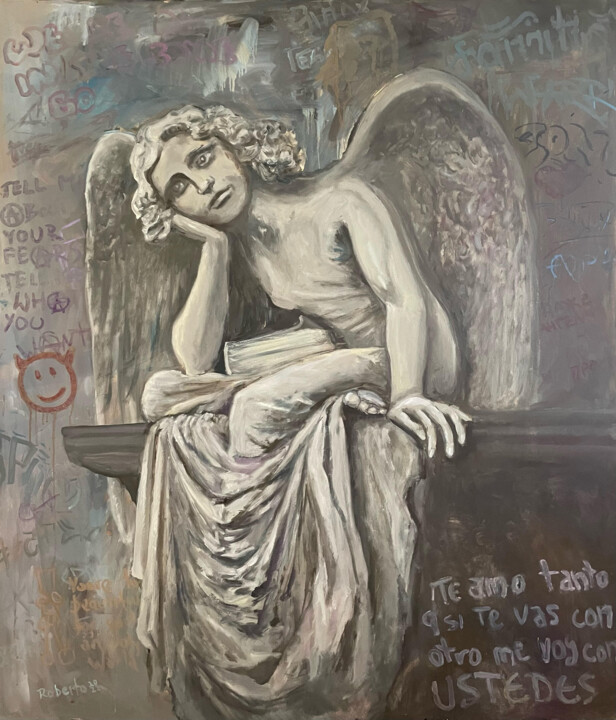
©2022 Robertas Kasperovicius
Notable original contemporary Street Art artworks
Banksy’s "Girl with Balloon" is a 2002 stencil artwork that depicts a young girl reaching for a heart-shaped balloon. This piece has become a symbol of hope and innocence, but also reflects the fleeting nature of life.
Shepard Fairey’s "Hope" is a 2008 poster featuring a stylized portrait of Barack Obama with the word "hope" beneath it. This artwork was commissioned during Obama’s 2008 presidential campaign and has since become an iconic symbol of political activism.
JR’s "Women Are Heroes" is a 2008 project in which he pasted large-scale portraits of women from around the world on the sides of buildings and other public spaces. This artwork highlights the strength and resilience of women, and the often overlooked contributions they make to society.
Os Gemeos’ "Giants" is a series of large-scale murals featuring the artists’ signature yellow characters. These playful and whimsical artworks often depict the artists’ personal experiences and memories, as well as their connection to their Brazilian heritage.
Keith Haring’s "Crack is Wack" is a 1986 mural that was painted on a handball court in New York City. This artwork serves as a warning about the dangers of drug addiction, and also reflects Haring’s belief in the power of art to inspire social change.
Invader’s "Space Invaders" is a series of pixelated mosaics featuring characters from the classic video game. These artworks have been installed in cities around the world, and serve as a reminder of the importance of play and imagination in our daily lives.
Swoon’s "Thalassa" is a 2014 installation that features a large-scale sculpture of a female figure riding a wave. This artwork reflects the power and beauty of the ocean, and also serves as a metaphor for the fluidity of human experience.
Borondo’s "Animal" is a 2016 mural that features a hyperrealistic portrait of a bull. This artwork reflects the artist’s interest in the relationship between humans and nature, and also serves as a commentary on the exploitation of animals for human gain.

Robertas Kasperovicius
Oil on Canvas | 43.3x37.4 in

Cody Choi
Photography | 30x20 in
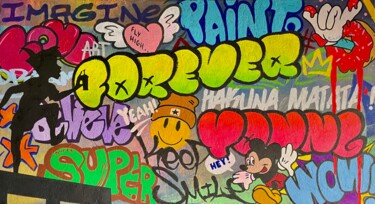
Yury Korolkov
Acrylic on Linen Canvas | 23.6x43.3 in

Frob
Acrylic on Linen Canvas | 47.2x59.1 in

Lele De Bonis
Enamel on Aluminium | 45.7x45.7 in

Charles Talkoff
Photography | 24x36 in

N Nathan
Acrylic on Paper | 47.2x35.4 in
